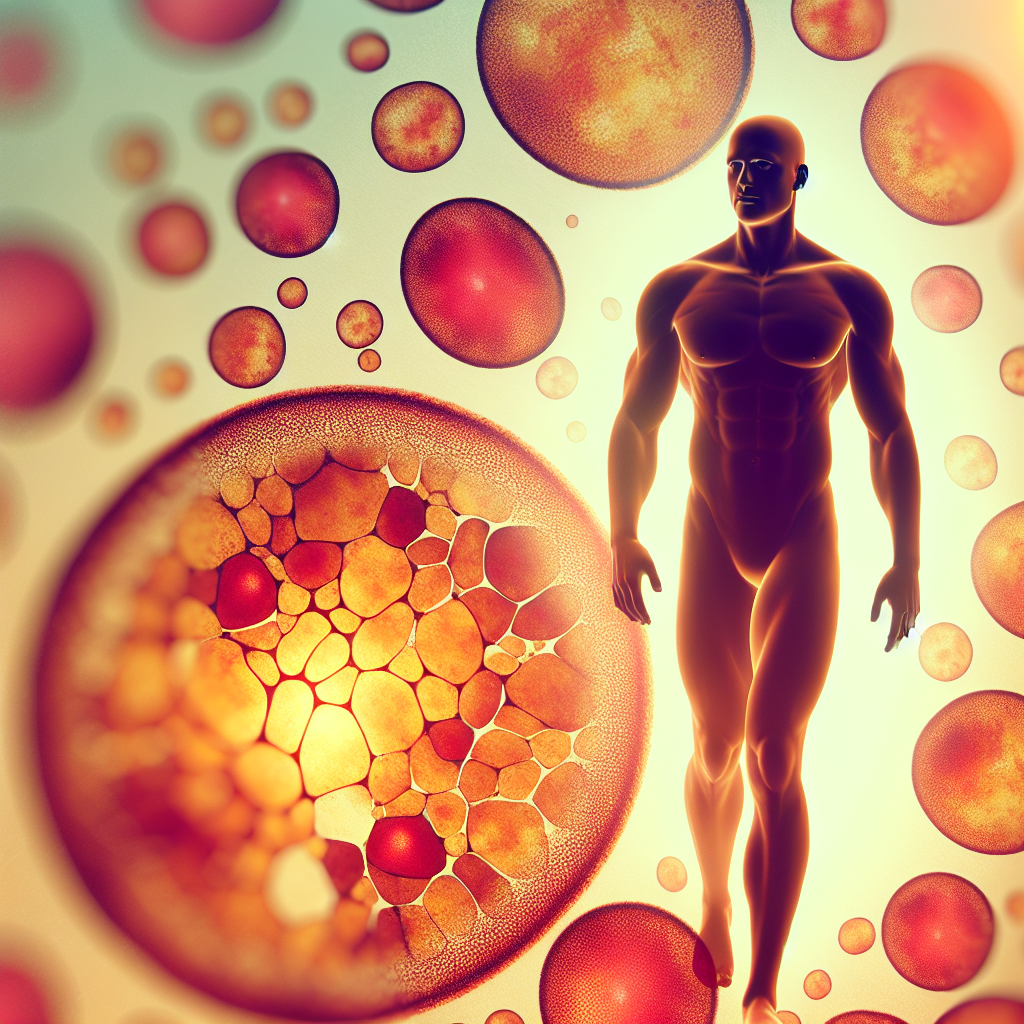Unlocking the Secrets of Fat Cells for Weight Loss
Imagine being able to coax your own body into shedding unwanted pounds – sounds almost magical, right? By unlocking the secrets of fat cells, however, this can become your reality. “Unlocking the Secrets of Fat Cells for weight loss” will guide you through an in-depth look at what constitutes these storehouses of energy, reveal how stimulating brown fat cells encourages weight loss, and help to debunk the question – do fat cells truly disappear? Furthermore, it also sheds light on the vital role of a specific fat-burning hormone hidden in muscle cells. Essentially, this journey through your body’s microcosm may transform your approach to weight control.

Understanding Fat Cells
Biology of fat cells
Ah, fat cells. You’ve likely heard of them, especially when discussions about weight management arise. Like other cells in your body, fat cells are pretty complex. Known as adipocytes in the scientific community, these cells are far more than mere storage containers for excess energy. In fact, they are vital components of a larger, intricate metabolic system that affects virtually every aspect of your body’s function.
Types of fat cells: white, brown and beige
Broadly, there exist three types of fat cells – white, brown, and beige. White fat cells are the largest and most common, acting primarily as energy-reserving cells. Brown fat cells, on the other hand, are packed with iron-rich mitochondria, which lends them their color. These cells are responsible for burning energy and generating heat, a process known as thermogenesis. Lastly, beige cells are unique hybrids – they can exhibit a mixture of characteristics from both other types, depending on various factors like exposure to cold or hormones.
Function of fat cells
Each type of fat cell has a unique function. White fat cells mainly serve as energy reserves, storing fat in the form of triglycerides. Brown fat cells burn energy to produce heat, helping to maintain body temperature especially in colder climates. This thermogenic ability can also promote calorie burning and weight management. As for beige fat cells, they behave mostly like white fat cells but can convert into a state similar to brown fat when stimulated, offering an additional method of energy expenditure and heat production.
Does losing weight mean losing fat cells?
Fat cell behavior during weight loss
When you lose weight, do you lose fat cells? Not quite. When you consume fewer calories than you burn, your body taps into the stored energy in fat cells. This causes triglycerides to be broken down, and the resulting energy is used by the body. While this process shrinks the fat cells, it doesn’t destroy or remove them.
Why do fat cells never disappear?
Fat cells are integral to the body’s energy management system, and the body has a set number of these cells from adolescence. Even during weight loss, fat cells only shrink in size but never leave completely. If weight is regained, these cells readily fill back up with fat. This phenomenon contributes to why maintaining weight loss can feel like an uphill battle.
Brown Fat Cells and Weight Loss
Characteristics of brown fat cells
Unlike most fat cells in your body, which store energy, brown fat cells burn energy. They’re filled with numerous mitochondria and are rich in iron, hence their unique color.
Activating brown fat cells to lose weight
Interestingly, you can actually stimulate your brown fat cells to work harder. When activated, these cells burn energy to produce heat, therefore burning calories in the process. Certain activities like cold exposure and exercise can do this, but more research in humans is needed.
Effects of cold exposure on brown fat cells
One exciting aspect of brown fat is its response to cold. Upon exposure to cold temperatures, the body initiates a process to warm itself. Brown fat cells play a crucial role in this by burning calories to generate heat.
Link Between Hormones and Fat Cells
The role of insulin in fat storage
Insulin, a hormone released after eating, plays a key role in fat cell behavior. It signals your fat cells to store energy as fat, particularly within white fat cells.
Leptin: the satiety hormone
Leptin, known as the satiety hormone, is another key player. It’s produced by fat cells and signals to the brain when you’ve eaten enough. It essentially prevents overeating and promotes energy expenditure.
Irisin: the fat-burning hormone found in muscle cells
Lastly, there’s irisin, a hormone released by muscle cells during exercise. This hormone essentially transforms white fat cells into brown-like cells, stimulating them to burn energy rather than store it.

Role of exercise in activating fat cells
Exercise and release of Irisin
Exercise doesn’t just help you burn calories in the moment, it can also promote longer-term metabolic changes. During exercise, the body releases irisin, a hormone that induces white fat cells to behave more like brown fat cells.
How can exercise switch white fat cells to browning?
The process of ‘browning’ refers to the conversion of white fat cells into beige cells, cells that have some brown fat cell-like attributes. Exercise plays a role in this by releasing irisin, which stimulates this transformation, leading to increased energy expenditure.
Why is muscle mass essential to burning fat?
Muscle mass plays a huge role in burning fat because muscles expend more energy than fat. The more muscle you have, the faster your metabolism, and the more calories you burn, even at rest.
Importance of Healthy Diet in Managing Fat Cells
Impact of high sugar diet on fat cell accumulation
Diets high in sugar can lead to an increase in fat cell size and number, particularly in the white fat stores. This happens as the excess sugar is converted into fat and stored in the body, leading to weight gain.
Benefits of balanced diet on fat metabolism
A balanced diet, on the other hand, can have beneficial impacts on fat metabolism. By providing an appropriate spread of nutrients, you can better regulate your energy intake and expenditure, thus preventing the unnecessary growth of fat cells.
Role of Intermittent fasting on fat burning
Intermittent fasting is an eating pattern that alternates between periods of eating and fasting. Emerging science suggests it may help in regulating fat cells by boosting metabolism, encouraging the body to tap into fat stores for energy.

Influence of sleep and stress on Fat Cells
How does lack of sleep affect fat cells?
Lack of sleep can disrupt your metabolism and lead to increased fat storage. When your body is sleep-deprived, it can disrupt the balance of hormones that affect your hunger signals, leading to overeating and weight gain.
Impact of stress on weight gain and fat storage
Stress, similar to lack of sleep, can also impact your weight. Chronic stress can trigger hormonal changes that increase appetite and promote fat storage, especially in the abdominal region.
Medical Interventions for Fat Cell Reduction
Liposuction and Fat cells
One of the most well-known medical interventions for fat cell reduction is liposuction. This surgical procedure physically removes fat cells from certain areas of the body. While the procedure can significantly reduce the number of fat cells, it doesn’t prevent the remaining fat cells from growing larger if weight is gained.
Non-surgical fat reduction techniques and their impact on fat cells
There are also non-invasive techniques for fat cell reduction, such as cryolipolysis (cool sculpting), laser lipolysis, and ultrasound fat reduction. These methods strive to reduce the size or number of fat cells without surgery, but their effectiveness varies.
Future perspectives on medical interventions for fat cell reduction
Research continues to explore new avenues for fat cell reduction. Developments in hormone regulation, pharmaceutical interventions, and other novel approaches could help us unlock the secrets of maintaining healthy fat cells and managing weight more effectively in the future.

Pros and Cons of Fat Cell Reduction
Health benefits of fat cell reduction
Fat cell reduction can bring a host of health benefits, including decreasing the risk of diseases related to obesity such as diabetes, heart disease, and certain types of cancer. Emotionally, it may improve self-esteem and body image.
Potential risks and disadvantages of fat cell reduction
Despite these benefits, there exist risks and potential drawbacks. Surgical procedures are often associated with inherent risks, including infection, bleeding, and complications from anesthesia. Meanwhile, non-surgical options might not provide the long-term or substantial results many seek.
Conclusion: Unlocking the Secrets of Fat Cells for Weight Loss
Summarizing the understanding of fat cells and weight loss
In conclusion, understanding fat cells is a crucial part of managing weight and overall health. From the roles of white, beige, and brown fat cells to the effect of hormones, exercise, and diet, many facets come into play.
Potential future research on fat cells and their role in weight management
As we move forward, we can expect more research on how to leverage our knowledge of fat cells, their behavior, and their triggers in our never-ending quest for health and balance. Indeed, understanding the science of our bodies is among our most powerful tools in reaching our health goals.



Pingback: Unlocking The Secrets Of Freeze Fat Cells To Aid Weight Loss